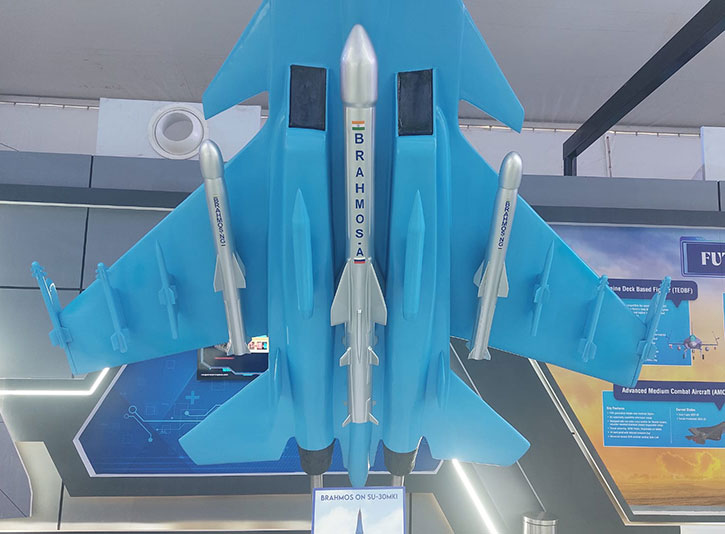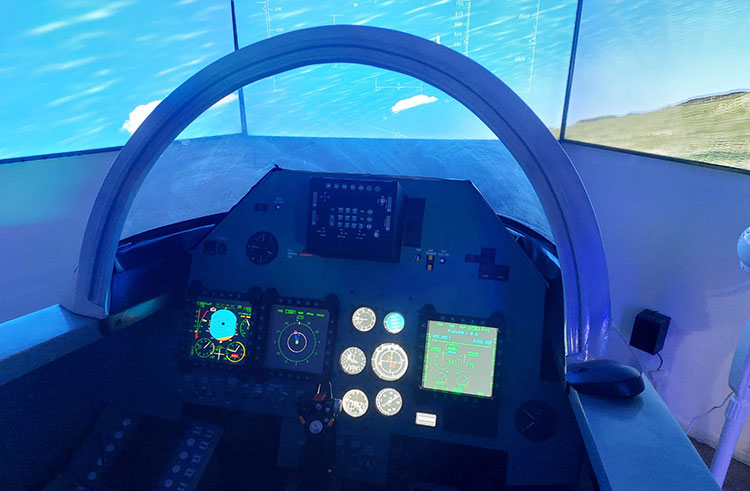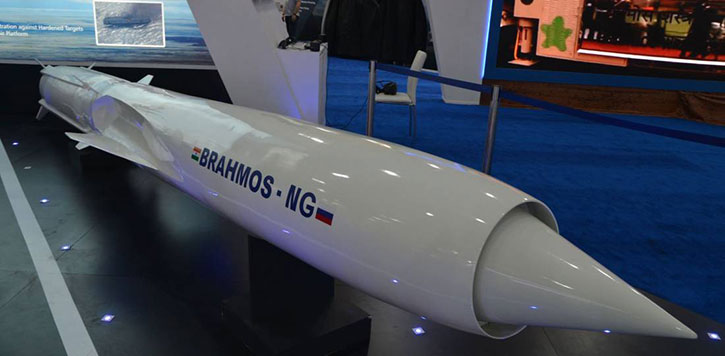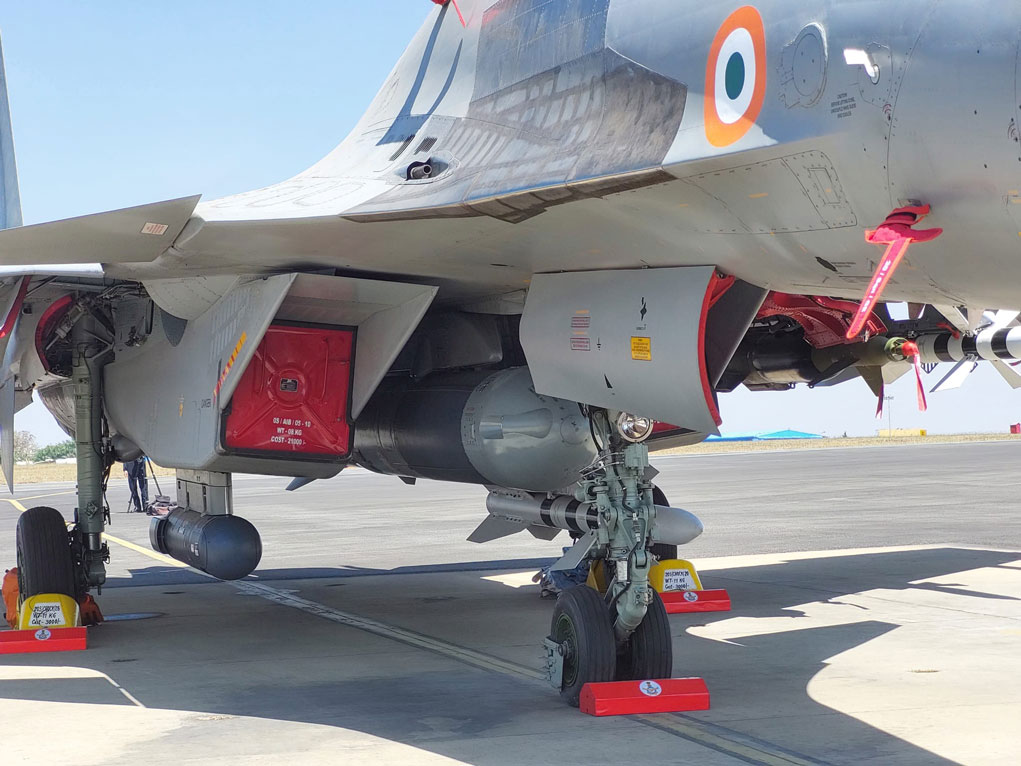Celebrating its 25 anniversary at the Aero India 2023 exhibition, Brahmos Aerospace shows the Brahmos I air-launched cruise missiles (ALCM) and the new Brahmos NG currently under development. Developed under the Indo-Russian Joint Venture, Brahmos I have been fielded by the Indian Navy and Army and is being fielded with the Air Force. The capability to operate the missile on Su-30 aircraft has raised prospects for Russian interest in obtaining the co-produced missile for their navy and air force. In 2016 such a purchase was discussed, but Russia did not pursue the acquisition. However, Russia may reconsider this opportunity after spending many of its Onyx missiles during the War in Ukraine.
The long-range naval/land attack missile is shown on the static display onboard the Sukhoi- 30MKI fighter platform of the Indian Air Force. Models of the next generation version (Brahmos NG) are displayed on a model at the Brahmos Aerospace stand.
Accelerated by a solid rocket booster and powered by a ramjet, the Brahmos I missile cruises at high supersonic speed (Mach 2.8) and can strike targets on land or sea at distances exceeding 500 km. The ALCM variant weighs 2.5 tons and carries a warhead weighing 200 kg. The Indian Air Force already confirmed a requirement of 400 missiles that will be delivered within five years.



Brahmos NG is designed as a smaller and more agile missile, reaching a top speed of 3.5 Mach. It will have the same range as Brahmos I and carry an equally capable warhead. The manufacturer plans to introduce another variant, Brahmos II, designed to reach an even higher speed, rated at the hypersonic regime (above Mach 5). In addition to achieving hypersonic speed, Brahmos II is likely to be low observable, making it suitable for fifth-generation platforms.

Brahmos I has attracted much interest in India and abroad. In January 2022, the Philippines became the first export customer of the system, deploying the missiles in coastal defense configuration. Some countries in the Middle East have also raised interest, and Brahmos intends to tap this interest, bringing the system to the IDEX 2023 exhibition in Abu Dhabi next week. As a versatile weapon system, Brahmos can be integrated on various platforms, including frigates, submarines, land-attack, and coastal defense weapons.
Brahmos is positioned as a central player in achieving India’s ambitious target to reach defense exports worth US$5 billion by 2025. Beginning in 2024, the missiles will be produced at a new manufacturing site built at Lucknow in Uttar Pradesh Defence Industrial Corridor (UPDIC). The site will also accommodate a development center for current and future missiles. More than 20,000 scientists, engineers, and technicians are directly engaged with the program, leveraging an ecosystem of +200 companies throughout India providing components and subsystems for the missile systems.

The Indian Sukhoi Su-30 MKI can carry a single missile on the centerline station. The large size and weight eliminated the ability to catty Brahmos I underwing. Even a single missile significantly reduces fuel and weapon loadout. The next-generation missile will be able to meet the three-missile configuration required by the Indian Air Force, adding two Brahmos NG missiles carried on underwing stations. Integrations for Tejas will expand the use of Brahmos NG with the Indian Air Force and Navy and open more export opportunities. Rafale integration is also considered for the Indian Air Force and could open more export prospects, primarily in the Middle East. The manufacturer also plans integration on Typhoon, targeting potential Middle East customers. Saudi Arabia, Oman, Qatar, and Kuwait are operating Typhoons and could be interested in the Brahmos NG integration on their aircraft. Brahmos NG is slated to begin flight tests within 1-2 years. The hypersonic Brahmos II is expected to follow toward the decade’s end.




















